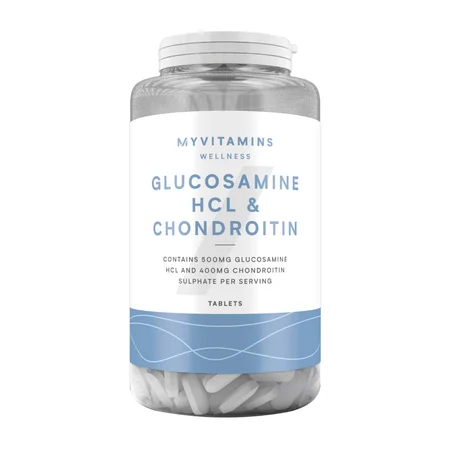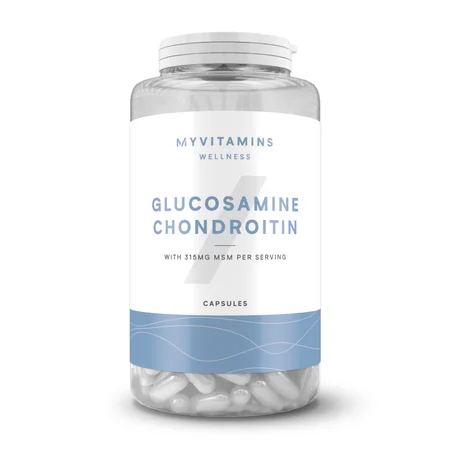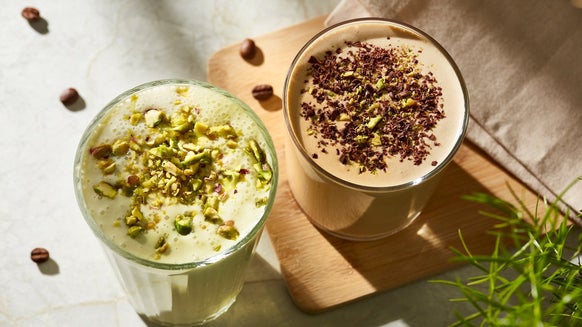The Best 4 Supplements For Your Joints

You may have tweaked our diet, increased how much water your drink, or included some supplements to your daily routine to support healthy skin and hair. But have you ever given much thought to your joints? In this article we’ll present some of the best supplements you can take to support your joints.
- What causes joint pain?
- What are the best supplements for joints?
- Why should you take care of your joints?
- How to maintain joint health

What causes joint pain?
Our joints are any place where our bones meet — common sites of joint pain include our knees, ankles, hips, and shoulders. Cartilage is a connective tissue found in our joints, which acts as a cushion between the bones, but can wear away over time.5 As we age, we may experience joint pain due to inflammation, previous injury, or repeated stress of daily activities or exercise. While supplements cannot cure joint pain, they may be helpful to keep your joints healthy.
What are the best supplements for joints?
1. Glucosamine
Glucosamine is a substance that can be found naturally in our bodies. It helps prevent our bones from rubbing against each other, which can cause pain and inflammation.5 It’s one of the most researched supplements for joint pain and is often included in many supplements aimed at treating joint pain.
There are currently two major types of glucosamine that have been heavily researched: glucosamine hydrochloride and glucosamine sulphate. Most of the research available tends to favour glucosamine sulphate over glucosamine hydrochloride.5
Two studies have found that supplementing glucosamine in cyclists, football players and rugby players resulted in protective effects on knee joint health.6,7
In one study, there was a reduction in the breakdown of muscle fibres in the joint cartilage of the group taking a higher dose of glucosamine in comparison to the low dose and placebo group, suggesting that glucosamine may help to slow the deterioration of cartilage in our joints.
2. Chondroitin
Like glucosamine, chondroitin is also a substance found in cartilage, helping to prevent it from breaking down.
Although research is needed, there are promising results from numerous studies showing how chondroitin can help to reduce joint pain and stiffness.6 One group of researchers found that consistent use of chondroitin was able to help reduce pain and clinical symptoms in patients with knee pain for up to three months.7
Many supplements available over the counter combine both chondroitin and glucosamine. However, it’s still unclear if taking one supplement is better than the other or if you should take both.6
3. Omega-3
There are two primary omega-3 fatty acids: docosahexaenoic acid (DHA) and eicosaptenaenoic acid (EPA). Both substances have anti-inflammatory effects that have benefits for our health.9
Omega-3 is considered an ergogenic aid, meaning it can help prepare you for exercise, improve your exercise efficiency and enhance recovery from exercise or prevent injury during intense training.2,10
4. Methyl sulfonyl methane (MSM)
MSM is a substance that can be naturally found in fruits, vegetables, grains, animals, and humans. It’s thought to provide sulphur to make other chemicals in the body.
In one study, when compared to a placebo, MSM improved post-exercise muscle and joint pain at clinically significant levels.12 There are also many other studies that have found chronic consumption of MSM can result in less muscle damage post-exercise.13
The suggested daily dosage of MSM is ~1g.

Why should you take care of your joints?
1. Lifting weights that are too heavy for you, along with bad technique.
2. Poor nutrition: Joints are like muscles in that they need the right nutrients to adapt to stress while training. In the long-term, poor nutrition and hard training can lead tendon inflammation from accumulated stress.
3. No rest days: Training on consecutive days with no rest over time can result in the joints suffering from too much trauma and can lead to injury.
Lack of sleep can also result in poor recovery as when we sleep our body produces hormones that deliver nutrients to the right places for full recovery.

7 Best Hamstring Stretches
Stretches are one of the easiest ways to relieve tight hamstrings.
How to maintain joint health?
1. Use the right training routine
Depending on the sport, using the right training regime is important to make sure you are not putting your joints through too much effort. In bodybuilding for example, a routine that alternates between periods of higher volume and repetition with periods of lower repetition and heavier weight tends to be recommended.
2. Don’t forget to warm up
Improper warm-up before training leads to risk of injury. A warm-up doesn’t need to take too much time: it can involve riding a stationary bike for 10 minutes, walking uphill for 15 minutes, or a lighter set in one of your reps.
3. Have an overall balanced diet
The common recommendations are to follow a healthy Mediterranean-style diet with plenty of wholegrain carbohydrates, fruits, vegetables, fish, some meat and butter and vegetables and plant oils. All these foods contain an array of nutrients, including omega-3 fatty acids. These have anti-inflammatory properties that in the long run supports good joint health.3,4
4. Eat enough calories
You may go through periods of the year where you ‘cut’ your calories low to promote weight loss. It’s important to ensure you don’t reduce your calories too much as this can lead to loss of bone mass and poor joint health.
A general rule of thumb is to start by reducing 200-300 calories a day and go from there.
Take home message
So, do these supplements work? The studies available show many positive results for their use in preventing joint injuries in many high-impact sports. However, further research is needed to provide more significant results.
If you are currently taking any medications, you should consult with a pharmacist or doctor before taking any supplements.
Getting healthy sources of omega-3 fats in your diet in combination with a good training regime with rest days and possible supplementation with nutrients discussed in this article should help you to achieve your fitness goals while maintaining strong joints.
FAQs:
What joint supplements should I take?
Supplements such as glucosamine, chondroitin, omega-3 and methyl sulfonyl methane are all beneficial for your joints.
What is glucosamine?
Glucosamine is naturally found in the body; it prevents the bones from rubbing against each other. Supplementing glucosamine can therefore help protect the joints.
What is chondroitin?
Chondroitin is a substance found in the cartilage which helps prevent the breakdown of cartilage.
What is omega-3?
Omega-3 fatty acids have anti-inflammatory effects which are beneficial for our health. Supplementing omega-3 may be beneficial for your joints.

Louise Bula is a UK Registered Dietitian with the Health and Care Professions Council. She has a Bachelor’s of Science in Nutrition and Food Science from the University of Reading and a Postgraduate Diploma in Dietetics from Queen Margaret University.
Louise has a great amount of experience that spans from working as a research assistant for a study funded by the prestigious Medical Research Council looking into the effects of saturated fats on heart disease. She also has worked in the NHS as a Dietitian as part of various multidisciplinary teams providing patients with acute and chronic illnesses a range of nutritional interventions.
She now specialises in Type‐2 Diabetes and works for a company providing patients’ care through a range of digital-based approaches. Louise also offers a private clinic overseas every month where she sees patients with a range of clinical conditions.
In her spare time, Louise enjoys weightlifting at the gym and cooking. Find out more about Louise’s experience here
1. Stanford Children’s Health. (2019). Retrieved 16 September 2019, from https://www.stanfordchildrens.org/en/topic/default?id=anatomy-of-a-joint-85-P00044
2. Gammone, M., Riccioni, G., Parrinello, G., & D’Orazio, N. (2018). Omega-3 Polyunsaturated Fatty Acids: Benefits and Endpoints in Sport. Nutrients, 11(1), 46. doi: 10.3390/nu11010046
3. Barber, D., & Sutherland, N. (2016). National Arthritis Week 2016 [Ebook]. London: House of Commons Library. Retrieved from http://researchbriefings.files.parliament.uk › CDP-2016-0182 › CDP-2016-0182
4. Johansson, K., Askling, J., Alfredsson, L., & Di Giuseppe, D. (2018). Mediterranean diet and risk of rheumatoid arthritis: a population-based case-control study. Arthritis Research & Therapy, 20(1). doi: 10.1186/s13075-018-1680-2
5. Overview | Osteoarthritis: care and management | Guidance | NICE. (2019). Retrieved 16 September 2019, from https://www.nice.org.uk/guidance/cg177
6. Wu, D., Huang, Y., Gu, Y., & Fan, W. (2013). Efficacies of different preparations of glucosamine for the treatment of osteoarthritis: a meta-analysis of randomised, double-blind, placebo-controlled trials. International Journal Of Clinical Practice, 67(6), 585-594. doi: 10.1111/ijcp.12115
7. MOMOMURA, R., NAITO, K., IGARASHI, M., WATARI, T., TERAKADO, A., & OIKE, S. et al. (2013). Evaluation of the effect of glucosamine administration on biomarkers of cartilage and bone metabolism in bicycle racers. Molecular Medicine Reports, 7(3), 742-746. doi: 10.3892/mmr.2013.1289
8. Morreale, P.,Manopulo, R., Galati, M.,Boccanera, L., Saponati, G., & Bocchi, L. (1996). Comparison of the antiinflammatory efficacy of chondroitin sulfate and diclofenac sodium in patients with knee osteoarthritis. The Journal of rheumatology, 23(8), 1385-1391.
9. Nagaoka, I., Tsuruta, A., & Yoshimura, M. (2019). Chondroprotective action of glucosamine, a chitosan monomer, on the joint health of athletes. International Journal Of Biological Macromolecules, 132, 795-800. doi: 10.1016/j.ijbiomac.2019.03.234
10. Wiest, E., Walsh-Wilcox, M., Rothe, M., Schunck, W., & Walker, M. (2016). Dietary Omega-3 Polyunsaturated Fatty Acids Prevent Vascular Dysfunction and Attenuate Cytochrome P4501A1 Expression by 2,3,7,8-Tetrachlorodibenzo-P-Dioxin. Toxicological Sciences, 154(1), 43-54. doi: 10.1093/toxsci/kfw145
11. Simopoulos, A. (2007). Omega-3 fatty acids and athletics. Current Sports Medicine Reports, 6(4), 230-236. doi: 10.1007/s11932-007-0037-4.
12. Petersson, S., Philippou, E., Rodomar, C., & Nikiphorou, E. (2018). The Mediterranean diet, fish oil supplements and Rheumatoid arthritis outcomes: evidence from clinical trials. Autoimmunity Reviews, 17(11), 1105-1114. doi: 10.1016/j.autrev.2018.06.007
13. Withee, E., Tippens, K., Dehen, R., & Hanes, D. (2015). Effects of MSM on exercise-induced muscle and joint pain: a pilot study. Journal Of The International Society Of Sports Nutrition, 12(S1). doi: 10.1186/1550-2783-12-s1-p8
14. Harty, P., Cottet, M., Malloy, J., & Kerksick, C. (2019). Nutritional and Supplementation Strategies to Prevent and Attenuate Exercise-Induced Muscle Damage: a Brief Review. Sports Medicine – Open, 5(1). doi: 10.1186/s40798-018-0176-6










